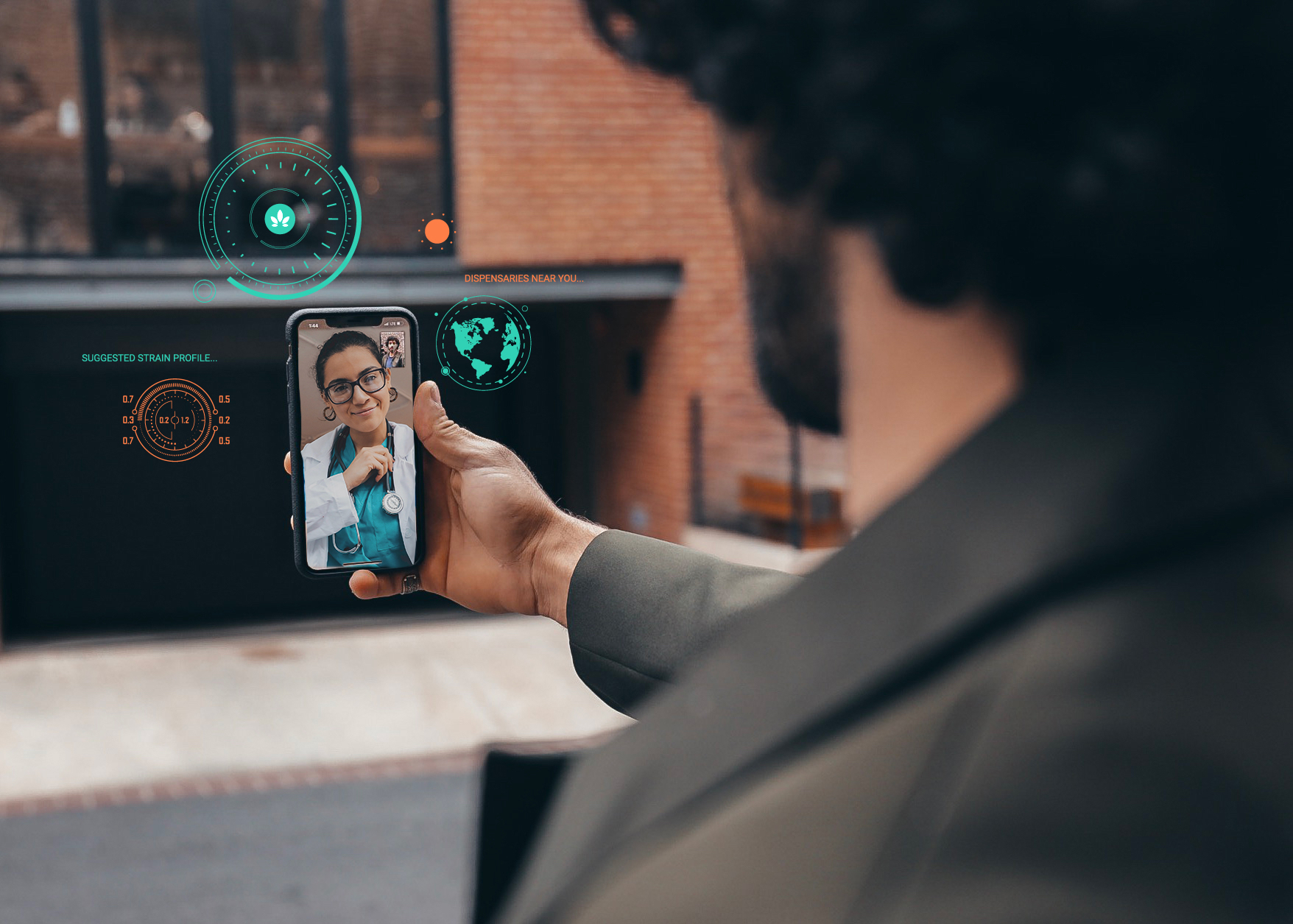Epidermolysis Bullosa Patients Turn to Medical Marijuana for Relief
- EB Skin, Wound Care and Cannabis
- Medical Cannabis and Pain Management for EB
- Epidermolysis Bullosa and Medical Cannabis Case Study
- End of Life Care for EB Patients
- Types of Epidermolysis Bullosa
Blisters are more than just a small annoyance for patients who are suffering from a group of rare skin conditions called epidermolysis bullosa (EB). These patients have genetic abnormalities that make their skin thin and fragile, which allows it to form blisters from something as simple as swallowing food or a gentle hug. Though many of these patients are born with this condition, it can still be a daily struggle for both children and adults living with EB.
Patients who have EB are very difficult to treat medically as many of the medications used for controlling pain and other symptoms may cause sedation, so each patient must be assessed by a medical professional to determine which symptoms need a priority in treatment (13).
There is a lot of research that suggests that medical cannabis may be of benefit to EB patients, particularly involving skin problems and managing pain. Can medical cannabis help EB patients improve their quality of life? Let’s keep reading to learn more about how it may be helpful.
Cannabis contains around 150 cannabinoids which include Δ9-tetrahydrocannabinol (THC) and cannabidiol (CBD) as well as several essential oil compounds called terpenes. These naturally occurring compounds begin working with our body through a special system called the endocannabinoid system (ECS). The ECS of our bodies encompasses fat-based neurotransmitters that can be targeted through cannabinoid receptors CB1 and CB2. When cannabinoids contact the CB receptors, they can influence several processes in our body including modulating our immune systems to slow inflammation, how we perceive pain, and our body’s ability to maintain homeostasis, or its proper body temperature and operating conditions.
EB Skin, Wound Care & Cannabis
Many EB patients with blisters and fragile skin fight a daily battle against skin infections due to poor wound healing. Fortunately, doctors in the Netherlands have been prescribing herbal cannabis since 2003 and recently pharmaceutical-grade cannabinoid-based medications (CBMs) for EB since 2015 (27) (9). There are several commercial cannabis-based products that are also currently being studied, including a cannabinol (CBN) topical cream from InMed Pharmaceuticals. This product is the first cannabis-derived product to be tested for therapeutic potential in wound healing for all four types of epidermolysis bullosa (5).
Evidence from EB patients and patients with other skin disorders such as psoriasis, eczema, pruritus (itching), skin ulcers & wounds, and acne support the use of cannabinoid products containing CBD and THC for skin health (27)(3). This is because the skin contains large amounts of both CB1 and CB2 receptors. These receptors are easily targeted through the skin as they can be found in keratinocytes (keratin producing cells), melanocytes (pigment-producing cells) cutaneous nerve fibers, skin cells, eccrine sweat glands, and hair follicles (3). Cannabinoids also interact through transient receptor potential (TRP) receptors found in a variety of types of skin cells as well as peroxisome proliferator-activated receptors (PPAR). PPAR is an important receptor pathway when it comes to EB because they mediate major biological functions in the body which include analgesia (pain reduction, also through TRP) and anti-inflammatory effects.
Please check out our pages on skin wounds & ulcers as well as sepsis for more information on how medical cannabis may help the skin heal and how it may target infections.
Medical Cannabis & Pain Management for EB
It is estimated that between 59-93% of EB patients experience significant pain that leads to distress and poor quality of life (27). Though many patients take opioids for the intense pain of EB, often these medications are unable to control the pain from the intense blistering adequately. Many of these patients begin opioid pain medications as early as infancy and develop tolerance and dependency, as well as have negative hormonal changes caused by them. For these reasons, medical cannabis and specific cannabinoids are being explored as an alternative for opioids for EB patients.
An international survey published in 2021 surveyed 71 EB patients and their use of CBMs for ongoing pain, itching, blisters, inflammation, and skin wound healing (25). Most of these patients reported using medical cannabis products via topical, edible, and oral routes. 95% of patients reported a decrease in pain and 79% of them reported decreasing pain medication. Additionally, 95% reported a decrease in overall EB symptoms along with a global decrease of 94% in itching. 91% of EB patients also reported improvements in wound healing. Dry mouth was reported in 44% of patients as the most common side effect.
Please check out our page on chronic pain for more information about how medical marijuana may be able to help treat pain that is not adequately controlled through opioids.
Medical Cannabis & Epidermolysis Bullosa Case Study
A series of three case studies in the British Journal of Dermatology examined a combination of THC and CBD therapy in patients suffering from EB (27). This study examined the cases of three adult patients: two patients with JEB and one experiencing recessive dystrophic DEB.
The first 64-year-old patient with JEB was unable to get satisfactory pain management from opioid medications and paracetamol (acetaminophen) for about 20 years. She was prescribed sublingual oil containing 20 mg/ml of CBD and 13mg/ml THC that was administered 4 times a day and incrementally increased the dosages over time. After 6 months, she was able to wean off oxycodone and amitriptyline, except for using oxycodone immediate release for dressing changes (27).
The 41-year-old JEB patient also utilized sublingual oil for pain that was not controlled through his other prescription medications (27). The patient reported a reduction in itching and weaned off morphine and oxycodone for pain. After experiencing a drug interaction, the oil was only taken at night. Unfortunately, the patient was unable to keep paying for the oil and his insurance changed, so his pain landed him in the hospital and is still uncontrolled.
The third patient was 36 years old and struggled with recessive DEB. He suffered from chronic pain, severe constipation, itching, squamous cell carcinoma on his hands, and underwent multiple amputations (27). He struggled with pain as he experienced sedative-side effects from amitriptyline, severe constipation from oxycodone, and delayed wound healing from topical morphine. The patient also was prescribed sublingual cannabis oil and intrapulmonary CBM and used them for two years. The cannabis-based products reduced the itching from the blisters as well as provided him with a 40% reduction in pain after the first week of therapy. Unfortunately, this patient also suffered from extensive skin cancer that he later died from.
Though each of these patients experienced some relief in skin symptoms and pain reduction with cannabis, this collection of case studies further proves the need for continued research for this rare and debilitating skin disease. Currently, there are several studies that are focusing on EB patients and cannabis as well as clinical trials that are in process (20).
End of Life Care for EB Patients
Treating patients for EB is tricky, and caring for these children and adults who have it as they near the end of life is no exception. Guidelines published in BMC Medicine take into consideration, not just skincare but also managing pain, uncomfortable itching, and the psychological effects of being chronically ill. It is recommended to keep the patient comfortable and to consider adding adjunct, complimentary, or alternative therapies for pain and neuropathy as many of these patients have developed a tolerance to traditional pain medications (13). The guidelines also recommend giving medications sublingually when patients have blisters and pain in their throats or other portions of their digestive tracts. These patients may benefit from cannabis tinctures, oils, and mints that are able to absorb sublingually.
Please check out our pages on chronic pain and neuropathy to learn more about the science behind medical cannabis for these related symptoms of EB.
When beginning medical cannabis treatments for chronic pain, EB, and other skin conditions, it is important to speak with the medical professional working on your case. While cannabis is generally thought of as safe, it can interact with other medications that you may be taking to manage your condition that can cause things like increased sedation. In addition, it may increase your risk of tachycardia if you have existing heart issues. While there is a lot of research in the areas of medical marijuana for skincare, it is important to be careful and knowledgeable about the products you are putting on your skin.
Please check out our CBD guide for more information on how to choose safe products.
Types of Epidermolysis Bullosa
EB is a group of rare diseases that cause the skin to blister easily because the skin is very fragile. It is usually noticeable when the patient is born. A simple hug, diaper change, or pat on the back can lead to very serious blisters and open wounds (11). In addition to the skin, some patients develop blisters in the tissues lining the mouth, intestines, rectum, and other areas of the body. Sores in these locations are typically caused by the friction involved in swallowing food, digestion, or having a bowel movement. Sometimes EB is mild while other times it can be a lifelong, severe disability that needs ongoing medical care. The types of EB are detailed out below.
Epidermolysis Bullosa Simplex (EBS)
EBS is the most common type of epidermolysis bullosa and can vary from mild to severe (11). When it is mild, it typically causes blisters only on the hands and feet of the newborn. In severe cases, blistering can occur anywhere on the skin or inside the mouth. The fingernails and toenails can be rough, thick, or missing. The blistering typically lessens with age leaving some patients with hardened skin on their palms or feet. Even severe cases of EBS typically lessen with age. Fortunately, once the blisters clear, the skin usually heals without scarring.
EBS can be both genetically autosomal dominant or recessive and typically targets the following genes: plectin, Kelch-like member 24, dystonin, and keratin genes KRT5 and KRT14 (15).
Dystrophic Epidermolysis Bullosa (DEB)
DEB, like EBS, causes blistering skin that tends to form scars. When the skin on the fingers and toes scars repeatedly, the fingers or toes can actually join together from the skin regrowing (11). Patients with mild cases typically only develop blisters on the hands, feet, knees, and elbows. Patients with severe cases can develop blisters all over their bodies and have missing areas of skin. They can also develop blisters inside the mouth and esophagus which makes eating and swallowing painful. Often this requires a feeding tube in children.
Patients who have DEB also have a higher risk of developing fatal skin cancers because the cancer is much more aggressive in these patients and it is difficult to treat properly (11). DEB can also be divided into recessive DEB (RDEB) and dominant DEB (DDEB) depending on if it is found on the dominant or recessive coding collagen VII gene (15)(25).
Junctional Epidermolysis Bullosa (JEB)
JEB is also a type of EB that causes patients to develop blisters and scarring. Like DEB, it can cause the fingers and toes to join together from repeated blistering and scarring (11). Intermittent JEB develops on the baby’s hands, feet, elbows, and knees. The blistering usually lessens by the time the baby is 2-3 months old. Severe cases of JEB can cause blisters to develop on large areas of the body and even in the digestive tract. It can lead to infections, hair loss, and breathing issues. Unfortunately, children with severe JEB often die within the first year of life.
There are two subtypes of JEB labeled intermediate and severe. It is a recessive gene inheritance mutation that occurs in the subunit chains of the laminin 332 gene, integrin genes, and/or collagen type XVII gene (15).
Kindler Syndrome (KEB)
Kindler syndrome is the rarest type of EB with only around 100 cases being reported since 1954 (11). Strangely, the largest number of known cases have occurred in a tribe that lives in rural Panama. When a patient is born with Kindler syndrome, the skin blisters easily and is extremely sensitive to the sun. Over time these symptoms lessen and a skin condition called poikiloderma appears.
Poikiloderma causes dark patches on the skin that initially appear only on spots of the skin that are regularly exposed to the sun (11). As the patient reaches puberty, the patches appear everywhere on the skin, and blood vessels may also be visible. The skin on the feet and hands thins and becomes dry and wrinkled, looking like that of an elderly individual.
KEB is considered an autosomal recessive disorder that affects the fermitin homolog 1 family of genes (15).
Epidermolysis Bullosa Acquisita (EBA)
Another extremely rare form of EB, EBA is a bit different from other types as it is considered an autoimmune disease (11). When a person has EBA, the body attacks its own collagen that is found in the skin and other tissues throughout the body. This attack leads to blistering. Once the blisters heal, white bumps called milia may appear and scarring can develop. The blisters tend to develop on the hands, knees, elbows, and ankles. The blisters can also form inside the mouth, nose, eyes, or inside other places in the body.
In addition, EBA differs from other forms of EB because it usually begins when a patient is in their 30s or 40s (11). The other forms of EB usually are found at birth or shortly thereafter.
Note: Veriheal does not intend to give this as professional medical advice. Do not attempt to self-diagnose or prescribe treatment based on the information provided on this page. Always consult a physician before making any decision on the treatment of a medical condition.
1. Adinolfi, B., Romanini, A., Vanni, A., Martinotti, E., Chicca, A., Fogli, S., & Nieri, P. (2013). Anticancer activity of anandamide in human cutaneous melanoma cells. European journal of pharmacology, 718(1-3), 154–159. https://pubmed.ncbi.nlm.nih.gov/24041928/
2. Alex Choi, Samantha Nagengast, Rina Meyer; Use of Medical Marijuana for Complex Symptom Management in a Pediatric Patient with Epidermolysis Bullosa. Pediatrics July 2020; 146 (1_MeetingAbstract): 306–308. https://publications.aap.org/pediatrics/article/146/1_MeetingAbstract/306/4386/Use-of-Medical-Marijuana-for-Complex-Symptom
3. Baswan, S. M., Klosner, A. E., Glynn, K., Rajgopal, A., Malik, K., Yim, S., & Stern, N. (2020). Therapeutic Potential of Cannabidiol (CBD) for Skin Health and Disorders. Clinical, cosmetic and investigational dermatology, 13, 927–942. https://www.ncbi.nlm.nih.gov/pmc/articles/PMC7736837/
4. Bíró, T., Tóth, B. I., Haskó, G., Paus, R., & Pacher, P. (2009). The endocannabinoid system of the skin in health and disease: novel perspectives and therapeutic opportunities. Trends in pharmacological sciences, 30(8), 411–420. https://www.ncbi.nlm.nih.gov/pmc/articles/PMC2757311/
5. Cannabinol (CBN) under development for Epidermolysis Bullosa (EB). InMed Pharmaceuticals. (2021, December 6). Retrieved December 19, 2021, from https://www.inmedpharma.com/pharmaceutical/inm-755-for-epidermolysis-bullosa/
6. Casares, L., Unciti-Broceta, J. D., Prados, M. E., Caprioglio, D., Mattoteia, D., Higgins, M., Apendino, G., Dinkova-Kostova, A. T., Muñoz, E., & de la Vega, L. (2020). Isomeric O-Methyl cannabidiolquinones with dual BACH1/Nrf2 activity. Redox Biology, 37, 101689. https://www.sciencedirect.com/science/article/pii/S2213231720308946?via%3Dihub
7. Caterina M. J. (2014). TRP channel cannabinoid receptors in skin sensation, homeostasis, and inflammation. ACS chemical neuroscience, 5(11), 1107–1116. https://www.ncbi.nlm.nih.gov/pmc/articles/PMC4240254/
8. Chelliah, M. P., Zinn, Z., Khuu, P., & Teng, J. (2018). Self-initiated use of topical cannabidiol oil for epidermolysis bullosa. Pediatric dermatology, 35(4), e224–e227. https://pubmed.ncbi.nlm.nih.gov/29786144/
9. De Hoop, B., Heerdink, E. R., & Hazekamp, A. (2018). Medicinal cannabis on prescription in the netherlands: Statistics for 2003–2016. Cannabis and Cannabinoid Research, 3(1), 54–55. https://www.liebertpub.com/doi/10.1089/can.2017.0059
10. Denda, M., Fuziwara, S., Inoue, K., Denda, S., Akamatsu, H., Tomitaka, A., & Matsunaga, K. (2001). Immunoreactivity of VR1 on epidermal keratinocyte of human skin. Biochemical and biophysical research communications, 285(5), 1250–1252. https://pubmed.ncbi.nlm.nih.gov/11478791/
11. Epidermolysis bullosa: Overview. American Academy of Dermatology. (n.d.). Retrieved December 19, 2021, from https://www.aad.org/public/diseases/a-z/epidermolysis-bullosa-overview
12. Epidermolysis bullosa: Diagnosis and treatment. American Academy of Dermatology. (n.d.). Retrieved December 19, 2021, from https://www.aad.org/public/diseases/a-z/epidermolysis-bullosa-treatment
13. Goldschneider, K.R., Good, J., Harrop, E. et al. Pain care for patients with epidermolysis bullosa: best care practice guidelines. BMC Med 12, 178 (2014). https://www.eb-clinet.org/fileadmin/user_upload/Media_Library/EB-CLINET/Dokumente/CPGs/Pain_Management_in_EB.pdf
14. Harchelroad, F. (n.d.). CBD & MARIJUANA DERIVATIVES IN MEDICINE. POMA.org. https://www.poma.org/assets/docs/Conferences/D8/2020/CMELectures2020DVIII/POMA%20D8%2020%20-%20Harchelroad%20-%20CBD%20Marijuana%20Derivatives.pdf
15. Has, C., Bauer, J. W., Bodemer, C., Bolling, M. C., Bruckner‐Tuderman, L., Diem, A., Fine, J. D., Heagerty, A., Hovnanian, A., Marinkovich, M. P., Martinez, A. E., McGrath, J. A., Moss, C., Murrell, D. F., Palisson, F., Schwieger‐Briel, A., Sprecher, E., Tamai, K., Uitto, J., … Mellerio, J. E. (2020). Consensus reclassification of inherited Epidermolysis Bullosa and other disorders with skin fragility. British Journal of Dermatology, 183(4), 614–627. https://onlinelibrary.wiley.com/doi/10.1111/bjd.18921
16. Kong, H. E., Pollack, B. P., & Blalock, T. W. (2021). Cannabinoids in dermatologic surgery. Journal of the American Academy of Dermatology, 85(6), 1565–1570. https://www.sciencedirect.com/science/article/abs/pii/S0190962221001043
17. Lamb, R. C., Lang, J., Terron-Kwiatowski, A., Baty, D., McLean, W. H., & Zamiri, M. (2014). Avascular necrosis of the hip and diffuse idiopathic skeletal hyperostosis during long-term isotretinoin treatment of epidermolytic ichthyosis due to a novel deletion mutation in KRT10. The British journal of dermatology, 171(4), 913–915. https://www.ncbi.nlm.nih.gov/pmc/articles/PMC4284034/
18. Martinez, A. E. (2019). Time to drop the stigma: Cannabinoids are drugs that may alleviate pain in people with epidermolysis bullosa. British Journal of Dermatology, 180(4), 711–712. https://onlinelibrary.wiley.com/doi/full/10.1111/bjd.17619
19. Milando, R., Friedman, A. Cannabinoids: Potential Role in Inflammatory and Neoplastic Skin Diseases. Am J Clin Dermatol 20, 167–180 (2019). https://link.springer.com/article/10.1007%2Fs40257-018-0410-5
20. Pope, E. (n.d.). The efficacy and safety of 3% cannabidiol (CBD) cream in patients with epidermolysis bullosa: A phase ii/iii trial – full text view. Full Text View – ClinicalTrials.gov. Retrieved December 19, 2021, from https://clinicaltrials.gov/ct2/show/NCT04613102
21. Price, S. (2020, November 17). Modified CBD molecules could help in the fight against skin disease. Health Europa. Retrieved December 19, 2021, from https://www.healtheuropa.eu/modified-cbd-molecules-could-help-in-the-fight-against-skin-disease/103949/
22. Pucci, M., Rapino, C., Di Francesco, A., Dainese, E., D’Addario, C., & Maccarrone, M. (2013). Epigenetic control of skin differentiation genes by phytocannabinoids. British journal of pharmacology, 170(3), 581–591. https://www.ncbi.nlm.nih.gov/pmc/articles/PMC3791996/
23. Ramot, Y., Oláh, A., & Paus, R. (2018). Cover image: Neuroendocrine treatment of inherited keratin disorders by cannabinoids? British Journal of Dermatology, 178(6), 1469–1469. https://onlinelibrary.wiley.com/doi/10.1111/bjd.16570
24. Schräder, N. H. B., Duipmans, J. C., Molenbuur, B., Wolff, A., & Jonkman, M. F. (2019). Combined THC and CBD to treat pain in eb. British Journal of Dermatology, 180(4). https://onlinelibrary.wiley.com/doi/abs/10.1111/bjd.17662
25. Schräder, N.H.B., Gorell, E.S., Stewart, R.E. et al. Cannabinoid use and effects in patients with epidermolysis bullosa: an international cross-sectional survey study. Orphanet J Rare Dis 16, 377 (2021). https://ojrd.biomedcentral.com/articles/10.1186/s13023-021-02010-0
26. Starrenburg, F. (2021, November 15). Epidermolysis bullosa (EB) and the effects of Cannabis Oil. Bedrocan. Retrieved December 19, 2021, from https://bedrocan.com/umcg-starts-scientific-research-into-cannabis-oil-for-chronic-pain-in-epidermolysis-bullosa/
27. Schräder, N. H. B., Duipmans, J. C., Molenbuur, B., Wolff, A. P., & Jonkman, M. F. (2018). Combined tetrahydrocannabinol and cannabidiol to treat pain in epidermolysis bullosa: A report of three cases. British Journal of Dermatology, 180(4), 922–924. https://onlinelibrary.wiley.com/doi/full/10.1111/bjd.17341
28. Sertznig, P., & Reichrath, J. (2011). Peroxisome proliferator-activated receptors (PPARs) in dermatology: Challenge and promise. Dermato-endocrinology, 3(3), 130–135. https://www.ncbi.nlm.nih.gov/pmc/articles/PMC3219163/
29. Sertznig, P., Seifert, M., Tilgen, W., & Reichrath, J. (2008). Peroxisome proliferator-activated receptors (PPARs) and the human skin: importance of PPARs in skin physiology and dermatologic diseases. American journal of clinical dermatology, 9(1), 15–31. https://pubmed.ncbi.nlm.nih.gov/18092840/
30. Simonian, J. S., Varanasi, S., Diaz-Fong, J. P., Richards, G. J., Nguyen, A. V., & Hoffman, J. (2020). A critical narrative review of medical cannabis in pediatrics beyond epilepsy, part II: Neurodevelopmental, movement, and Pain Disorders. Pediatric Medicine, 3, 13–13. https://pm.amegroups.com/article/view/5631/html
31. U.S. Department of Health and Human Services. (2018, April). Epidermolysis bullosa. Genetic and Rare Diseases Information Center. Retrieved December 19, 2021, from https://rarediseases.info.nih.gov/diseases/6359/epidermolysis-bullosa

















